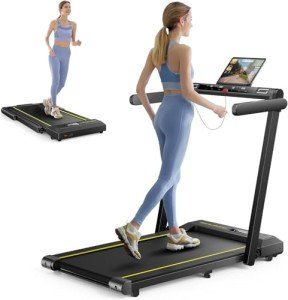10 No-Fuss Ways To Figuring Out Your Non Electric Treadmill
The Rise of Non-Electric Treadmills: An Eco-Friendly Choice for Fitness Enthusiasts
Recently, the fitness industry has seen a rise in demand for non-electric treadmills. As people end up being more conscious of their carbon footprint and look for sustainable choices for their workout routines, non-electric treadmills have emerged as an appealing option to their motorized counterparts. This post dives into the benefits, types, and functions of non-electric treadmills, culminating in an extensive FAQ area to attend to common questions.
What is a Non-Electric Treadmill?
A non-electric treadmill, frequently referred to as a manual treadmill, operates without a power source. Rather of being propelled mechanically, the user's body weight and motion drive the belt. This design produces an unique experience, typically requiring more effort however providing a number of advantages in regards to fitness and sustainability.
Benefits of Using Non-Electric Treadmills
Sustainability: Non-electric treadmills get rid of the requirement for electricity, making them ecologically friendly. This decrease in energy consumption can significantly add to lower electricity bills and a decreased carbon footprint.
Enhanced Workout Efficiency: Users should actively engage their muscles to keep speed, which can cause more reliable exercises. This increased effort can translate to a higher calorie burn compared to electric designs.
Flexibility: Many non-electric treadmills can be gotten used to offer various incline levels. This feature enables users to tailor their exercises, targeting numerous muscle groups and difficult themselves in new ways.
Resilience: Generally, non-electric treadmills have fewer mechanical parts than powered versions, resulting in lower upkeep expenses and increased durability.
Compact Design: Many non-electric treadmills are developed with portability in mind, making them easy to move and store, ideal for those with minimal area.
Kinds Of Non-Electric Treadmills
Non-electric treadmills can be classified into several types based upon design and features:
Type
Description
Pros
Cons
Woodway Treadmills
Known for their curved shape, providing a special running experience.
Decreases effect on joints, ideal for runners.
Normally more costly.
Flat Non-Electric Treadmills
Basic design offering uncomplicated performance.
Economical and easy to utilize.
Might not have advanced features.
Incline Manual Treadmills
Permits users to set an incline for added trouble.
Versatile and adjustable exercises.
Can be physically requiring.
Folding Non-Electric Treadmills
Space-saving styles that can be easily kept away.
Convenient for small home.
Might be less durable than non-folding choices.
Secret Features to Consider
When picking a non-electric treadmill, consumers need to focus on the following features:
Build Quality: Ensure that the frame is strong and made of long lasting materials to hold up against day-to-day use.
Running Surface: A wider and longer running surface supplies a more comfortable experience, particularly for taller individuals.
Incline Options: Adjustable incline settings can boost workout variety and intensity.
Weight Capacity: Check the weight limit to make sure the treadmill accommodates all intended users.
Portability: If space is an issue, look for a lightweight treadmill with wheels for easy motion.
Service warranty: A great warranty shows the producer's confidence in their product, using peace of mind to customers.
Non-Electric Treadmill vs. Electric Treadmill
Feature
Non-Electric Treadmill
Electric Treadmill
Source of power
Manual (no electricity needed)
Requires electricity
Upkeep
Minimal, often needs no repairs
May require mechanical servicing
Calorie Burning
Usually greater due to user effort
Varies, often lower for the exact same speed
Customizability
Minimal to manual changes
Offers different pre-set programs
Expense
Typically more inexpensive
Can be more pricey due to features
Regularly Asked Questions (FAQ)
1. Are non-electric treadmills suitable for novices?
Yes, non-electric treadmills can be appropriate for newbies, although they might require a steeper learning curve for those unfamiliar with manual treadmills. A gentle start on a low incline can reduce amateurs into their physical fitness journey.
2. How do I maintain a non-electric treadmill?
Maintenance is minimal. Routine cleansing and inspecting for any wear on the belt or deck can assist prolong the life of the treadmill. Always describe the maker's guidelines for detailed maintenance guidelines.
3. Can I work on a non-electric treadmill?
Definitely! Lots of non-electric treadmills are designed to accommodate running. However, users must begin by walking and slowly increase their pace and incline as they develop strength and endurance.
4. How do non-electric treadmills handle weight?
Many non-electric treadmills have a weight capacity comparable to electric designs. Nevertheless, it is necessary to inspect the specs to ensure proper support for the user's weight.
5. Are there any disadvantages to utilizing a non-electric treadmill?
Some users may find that non-electric treadmills need more effort, perhaps making them more exhausting. Additionally, they may do not have sophisticated features discovered in electric models, such as built-in exercises or heart rate screens.
As more individuals look for environmentally friendly and efficient fitness choices, non-electric treadmills have begun to catch the attention of workout lovers. With their mix of sustainability, performance, and resilience, these manual devices can raise any workout routine. By comprehending Walking Machine , types, and essential features, consumers can make educated decisions in selecting the ideal treadmill for their needs, eventually supporting a healthier way of life while adding to a greener planet.
